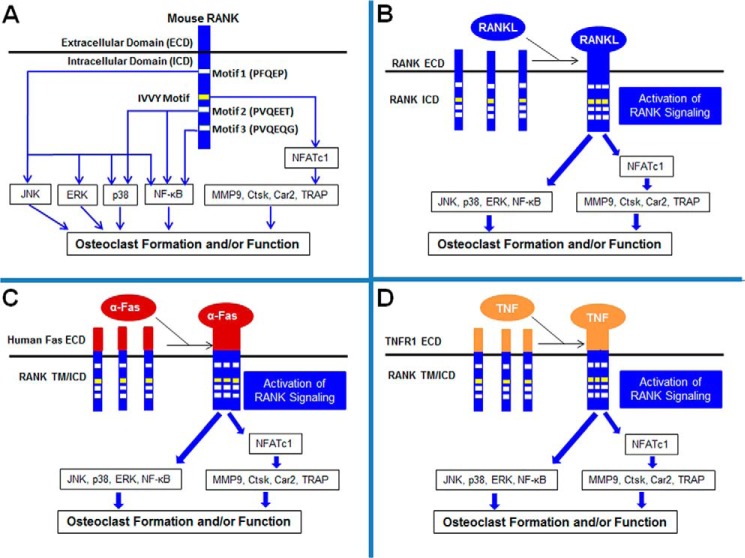FIGURE 1.
RANK signaling pathways in osteoclasts and schematic of the chimeric receptor systems for studying RANK signaling pathways in osteoclasts. A, RANK motifs and their modes of action in osteoclast formation and/or function. B, model showing how RANKL activates its receptor, RANK, to transduce signaling pathways for osteoclast formation and/or function. C, schematic of the chimeric receptor containing the human Fas external domain linked to the transmembrane and cytoplasmic domains of mouse RANK, which can be stimulated by α-Fas to activate RANK signaling for osteoclast formation and/or function. D, schematic of the chimeric receptor consisting of the mouse TNFR1 external domain linked to the transmembrane and cytoplasmic domains of mouse RANK, which can be stimulated by TNF to activate RANK signaling for osteoclast formation and/or function. TM, transmembrane domain.

